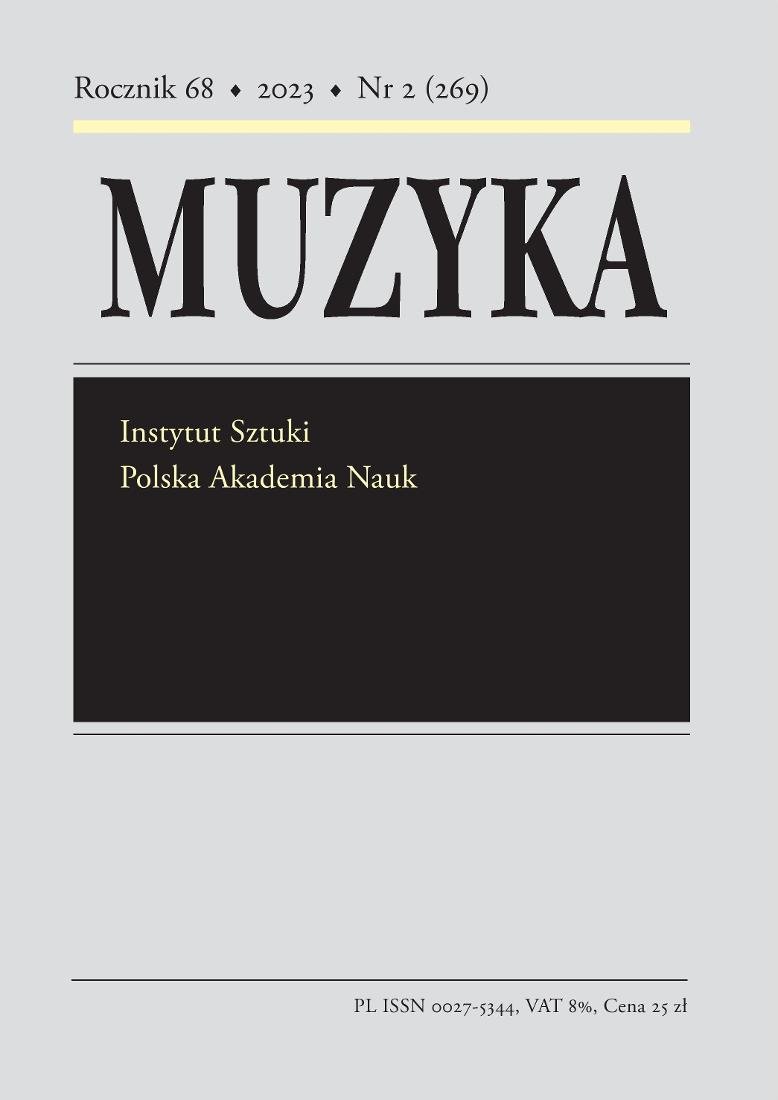Muzyka Dymitra Szostakowicza w międzywojennej Warszawie
Dmitri Shostakovich’s Music in Warsaw between the World Wars
Author(s): Magdalena DziadekSubject(s): Music
Published by: Instytut Sztuki Polskiej Akademii Nauk
Keywords: Dmitri Shostakovich; Soviet music before 1939; Warsaw’s musical culture in the interwar period; the reception of Russian music in Poland
Summary/Abstract: The paper discusses performances of Dmitri Shostakovich’s music in Warsaw between 1927 and 1939. A survey of these performances has been complemented with texts reflecting their critical reception, collected from Warsaw dailies and periodicals that represented different political perspectives. The historical background has also been sketched, which makes it possible to reconstruct the history of Shostakovich’s musical presence in the Polish capital in the context of the complicated relations between Poland and the USSR in the interwar period.Five compositions by Shostakovich were performed in Warsaw between 1927 and 1939: Piano Sonata No. 1 (by the composer himself ), Symphony No. 1 (first under the baton of Grzegorz Fitelberg, later under Lovro von Matačić and Mieczysław Mierzejewski), suite from the ballet The Golden Age (first presented in Warsaw by Leningrad-based conductor Julius Erlich), Piano Concerto (first by Shura Cherkassky, later – by Artur Balsam), and Preludes, Op. 34 for piano (first by Arthur Rubinstein, subsequently by Mieczysław Horszowski and Shura Cherkassky). A production of Lady Macbeth of the Mtsensk District was to be held at Warsaw Opera. The assessment of Shostakovich’s works by Polish music critics was influenced in the early 1930s by the image of this composer as a symbol of the Soviet success, generated in the USSR, as well as the awareness of his music’s success in the West (whose echoes reached Warsaw via the radio and foreign press, and through international musicians, who were Shostakovich’s main promoters in Poland). The Warsaw critics’ opinions on the composer’s output differed depending on their individual worldviews and aesthetic stance. Most comments were reserved and focused on defining the trend represented by this music. Definitions frequently revolved around Shostakovich’s ostensible indebtedness to Russian tradition and his suspension between conservative (Romantic) approach and modernity. Reviewers representing nationalist press proposed a more radical appraisal, presenting Shostakovich as an alleged representative of musical ‘Bolshevism’. Its influence was discerned particularly in the artist’s ‘lighter’ pieces, especially The Golden Age suite. The Warsaw critics and audience exhibited little interest in Shostakovich’s harassment in his native country in 1936. The only more vivid reactions came from the collaborators of the niche magazine Muzyka Polska and the anti-Bolshevik Eugenia Weber, member of Warsaw’s Russian colony. In the last years before World War II, nationalist critics’ attacks on Shostakovich intensified, since he was viewed as a representative of the communist regime.
Journal: Muzyka
- Issue Year: 68/2023
- Issue No: 2
- Page Range: 24-48
- Page Count: 25
- Language: Polish

